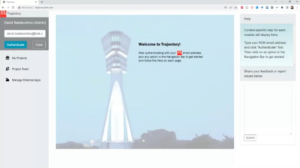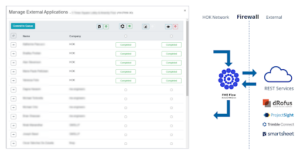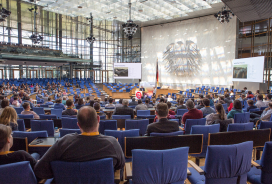Addressing resource constraints with innovative solutions
HOK is a global leader in design, architecture, engineering, and planning, with over 1,700 personnel dedicated to improving people’s lives, serving clients, and healing the planet. Facing challenges of limited resources and budget constraints, HOK turned to FME to revolutionize their internal processes, notably through the development of their innovative web application, Trajectory.
In the AEC industry, acquiring and retaining top-tier software development talent is a formidable challenge. Unlike commercial software sectors, AEC firms often cannot match the competitive financial incentives and challenging work that these offer, and candidates with computer science backgrounds frequently lack specialized knowledge of AEC processes. HOK’s solution? Leveraging FME’s intuitive, no-code platform to empower their subject matter experts to perform data integrations without traditional coding expertise. This move has redefined team roles, merging the efforts of conventional developers and FME power users to enhance collaboration and streamline workflows.
Cutting through administrative overload
Following the shifting trend of using an increasing number of best-in-class tools to better suit needs, HOK was presented with a new challenge—managing a growing administrative workload. The response was Trajectory, a central management platform that works seamlessly with FME, simplifying project setup, user assignment and permissions. Administrators can swiftly onboard team members and simultaneously assign access to necessary services through a single interface.

Trajectory harnesses the power of FME Flow to integrate seamlessly with multiple REST services, such as ProjectSight, Trimble Connect, dRofus, and Smartsheet, with additional integrations on the horizon. FME facilitates simplified communication between these services. FME Flow automations are triggered by webhooks, determining which databases to connect to, and run workspaces that orchestrate jobs via CPU-Usage Engines — all in just a few minutes. Each iteration of Trajectory builds on the previous, enhancing functionality and user experience.

Looking ahead: A self-service model and continued innovation
The future of Trajectory includes plans for a completely redesigned front end with the goal of transitioning the tool into a self-service, user-first experience, further streamlining the project setup process and reducing friction. The workspaces developed for this first iteration of Trajectory will be mostly re-used with minimal changes, and the new system will allow for rapid updates and the addition of new services, working outside the boundaries of the traditional company network and serving the needs of a hybrid workforce.
Using FME, HOK was able to expand its software development team to include members with little to no coding experience, successfully collaborating to produce a fully-functional and mission critical web application. With Trajectory, HOK transformed hours of manual administrative data entry into a few minutes of seamless automation per week, exemplifying significant time and resource savings.
HOK shows how FME is being used to empower staff to achieve more with less, transforming complex, time-consuming processes into streamlined, efficient operations.
Check out our recent webinar with HOK, where they share more about their success with using FME to bridge resource gaps and produce the game-changing Trajectory tool.




